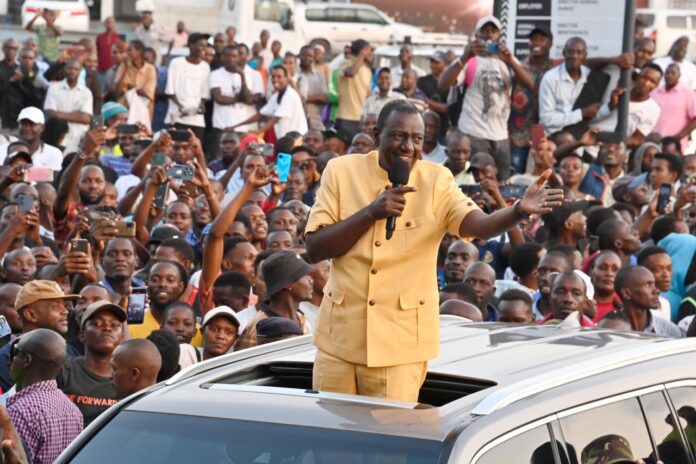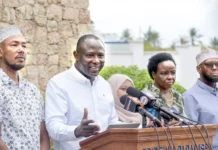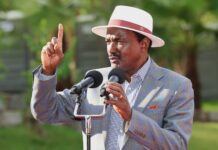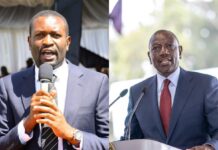Written By Lisa Murimi
Kenya’s political landscape is abuzz following President William Ruto’s recent Cabinet appointments, which include four senior members from the opposition ODM party.
This move, aimed at fostering a ‘broad-based government,’ has sparked intense debate and criticism amid ongoing unrest.
Francis Atwoli, Secretary General of the Central Organisation of Trade Unions (COTU-K), has urged Ruto to fill the remaining Cabinet post with younger Kenyans while openly supporting the inclusion of opposition figures.
Ruto’s decision to incorporate top ODM leaders into his administration follows significant public backlash and six weeks of protests. The President’s strategy appears to be a calculated effort to bridge political divides and stabilize a country rocked by social and economic turmoil. However, the response from the public and opposition alike has been mixed.
The newly nominated Cabinet members from ODM are high-profile figures with substantial political clout. John Mbadi, a prominent ODM leader, is set to become the National Treasury and Economic Planning Minister.
Opiyo Wandayi is proposed for Energy, Hassan Joho for Mining and Blue Economy, and Wycliffe Oparanya for the Ministry of Co-operatives and MSMEs. These appointments signal a significant shift in Kenya’s political dynamics, bringing opposition voices directly into the heart of the government.
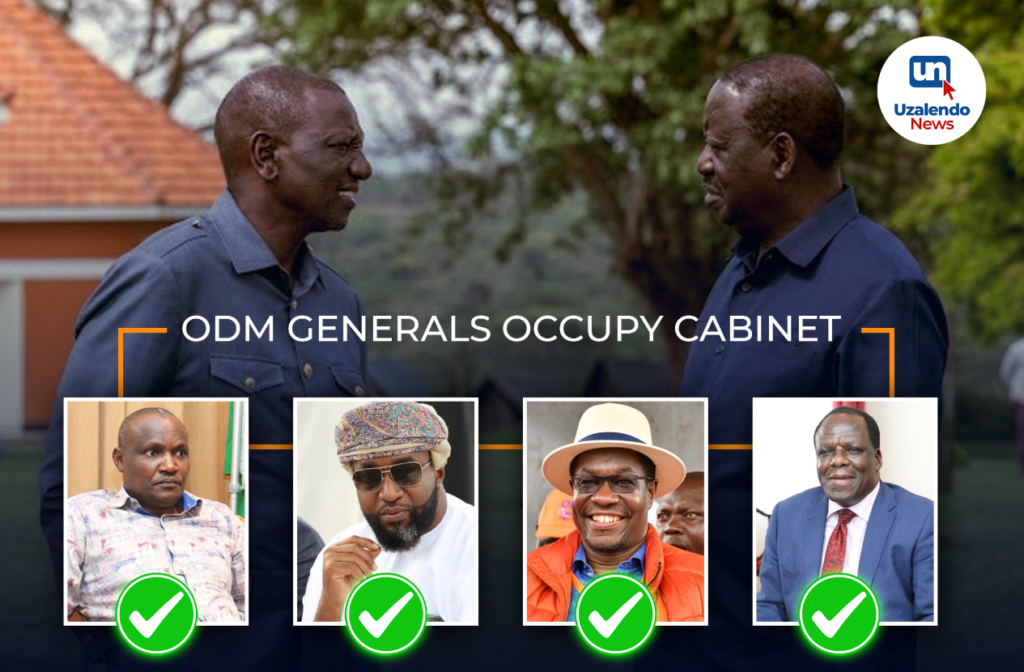
President Ruto defended his choices, praising the broad-based approach and the willingness of diverse organizations to set aside partisan differences.
“Their readiness to join forces for the radical transformation of Kenya marks a historic gesture of patriotism,” Ruto remarked, emphasizing his commitment to a unified government despite the turbulent backdrop.
Despite Ruto’s assurances, the public response has been largely negative. Young protesters, vocal against the Finance Bill 2024, argue that including opposition leaders in the Cabinet perpetuates a cycle of co-opting political rivals without delivering tangible benefits to the populace.
Their frustration highlights deeper dissatisfaction with the current political system and its failure to address pressing economic and social issues.
The protests, which have claimed over 60 lives according to the Kenya National Human Rights Commission, underscore the severity of the crisis facing Ruto’s administration.
The demonstrations, initially triggered by the controversial Finance Bill 2024, have persisted even after the President’s decision to shelve the proposed tax increases. Activists and opposition groups continue to call for Ruto’s resignation, reflecting growing discontent with his leadership.
The Cabinet reshuffle is not merely a matter of political maneuvering but a critical response to the unrest that has disrupted economic activities and strained Kenya’s social fabric.
The President’s attempt to include opposition figures could be seen as a strategic move to stabilize the situation and demonstrate a willingness to address the concerns of the protesting public.









